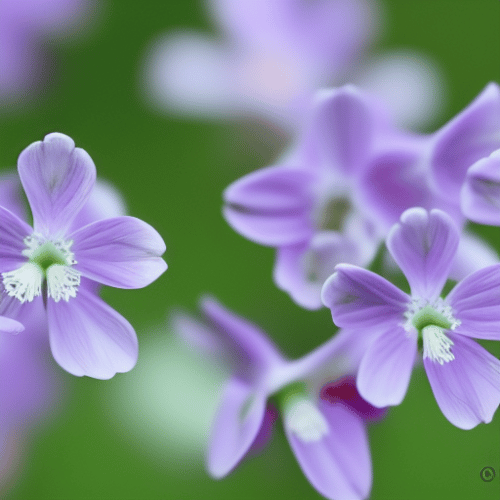The Cardamine pratensis species, most commonly called the cuckoo flower, is classified as part of the family Brassicaceae. It is a perennial flowering plant that produces pink and sometimes white flowers in the spring.
The Cuckoo flower’s common name references the natural patterns of the cuckoo bird, which starts singing in the spring right around the same time the plant begins flowering.
Historically, picking the cuckoo flower and bringing it indoors was thought to be unlucky in some parts of England. This is because folklore claims it is a sacred plant for fairies. For this reason, it hasn’t been widely used for medicinal purposes. However, it has been used as a tonic in the spring or to combat symptoms of a heavy menstrual cycle.
Despite the mythological implications, Cardamine pratensis is the county flower of Cheshire and Brecknockshire/Sir Frycheiniog, most likely because of its abundance in these regions of the UK.
Overview
- Scientific Name: Cardamine pratensis
- Common Name/s: Cuckoo flower, lady’s smock, fairy flower, milkmaids, coco plant, or May flower
- Family: Brassicaceae
- Origin: native
- Habitat: shady areas close to damp meadows, grasslands, ditches, roadsides, or bordering streams and ponds
- Flowering months: April to June
Cuckoo Flower Identifiable Features
Aside from cuckooflower, Cardamine pratensis plants are also commonly known as lady’s smock, fairy flower, milkmaids, coco plant, or May flower plants.
The cuckoo flower is also edible for humans and wildlife alike. It is an important food plant for orange tip butterflies and caterpillars.
For humans, both the leaves and the flowers are edible on cuckooflower plants. The younger leaves and flowers possess a peppery flavour that some say tastes like wasabi or English mustard. The leaves are often used in salads and sandwiches as a tangy substitute for watercress.
Stems and Leaves
Cuckoo flower leaves come in two different varieties. The first type is long and thin pinnate-style leaves that grow from the stalk on opposite sides. The cuckooflower also has small compound basal leaves which grow near the base and are round in shape. The basal leaves can be harvested year-round.
In the wild, Cardamine pratensis grows to be between 40 – 60cm in height.
Flowers

The lady’s smock flowers have four petals in a cross shape. They typically have pink flowers with dark violet veins on the petals, but solid white flowers can also be found and are not uncommon.
Slight variations of the cuckooflower also exist that bloom with a double flower or a stacked flower, where one flower blooms in the centre of an earlier bloom.
Lady’s smock protects itself during heavy rainstorms or at night by drooping and closing its petals.
Search for cuckooflower blooms in the spring. They are best seen in April, May, and June.
After the flowers fall from the stems, near the end of June, thin seed pods develop with small seeds inside. The pods later drop and are blown in the wind to disperse the seeds.
Where Does the Cuckoo Flower Grow?
Cuckooflower plants can be found throughout Europe, with a high abundance in the UK, Western Asia, and North America.
Their preferred location to grow in the wild is anywhere with damp earth. They are often found in shady areas close to damp meadows, grasslands, ditches, roadsides, or bordering streams and ponds.
How Do You Grow Cuckoo Flowers?
The cuckooflower can be grown indoors or outside in your garden with a bit of care. Cuckooflower plants prefer well-drained soil that is moist and acidic, as is common in meadows. They thrive in damp soil and full to partial shade.
If you are planting with seeds, you can simply sprinkle them on the ground without covering them with soil. If you are starting with a plant, make sure to leave 30 to 40cm of space between plants in your garden so they have ample room to grow and spread.
What do you think about the cuckoo flower? Have you tried using it in any recipe? Tell us about it in the comments.







